This set of Welding Questions and Answers for Campus interviews focuses on “Riveting”.
1. Which of the following articles is not manufactured using riveting?
a) Rail wagons
b) Coaches
c) Pressure vessels
d) Helmets
View Answer
Explanation: Riveting is largely used in the manufacture of rail wagons, coaches, pressure vessels, bridges and few types of furnace bodies, but for the manufacture of helmets, riveting cannot be used.
2. The following figure represents which rivet head?
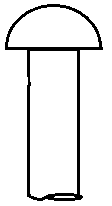
a) Pan head
b) Conical head
c) Countersunk head
d) Cup head
View Answer
Explanation: Riveting is a process that is used for fastening a particular joint permanently. The following figure is that of a Cup head riveting or snap head riveting is the most commonly used method of riveting.
3. The following figure represents which rivet head?
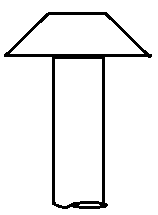
a) Pan head
b) Conical head
c) Countersunk head
d) Cup head
View Answer
Explanation: For the production of rivets, the most commonly used materials are wrought iron and mild steels. The following figure represents a pan head rivet.
4. Which of the following materials is not used in making rivets?
a) Wrought iron
b) Mild steel
c) Brass
d) Calcium
View Answer
Explanation: Among the following, calcium is not used the riveting process. For the making of rivets, the used materials are wrought iron and mild steels. There are other materials also used in it, but they are used for small works, such as brass, copper and aluminium.
5. The following figure represents which rivet head?
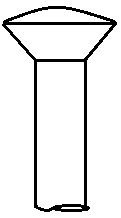
a) Pan head
b) Half countersunk head
c) Conical head
d) Snap head
View Answer
Explanation: Riveting is a process that is used for fastening a particular joint permanently. For the production of rivets, the most commonly used materials are wrought iron and mild steels. The following figure represents a pan head rivet.
6. The following figure represents which rivet head?
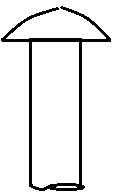
a) Conical head by hammering
b) Snap head
c) Pan head
d) Conical head
View Answer
Explanation: None.
7. The following figure represents which rivet head?
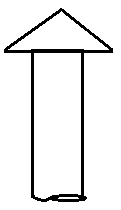
a) Conical head by hammering
b) Snap head
c) Pan head
d) Conical head
View Answer
Explanation: Such an apparatus has a conical head and is produced by hammering. The following figure represents a conical head unlike snap head, pan head and conical head.
8. There can be 4 rows of rivets in lap joint.
a) True
b) False
View Answer
Explanation: In case of lap joint or butt joint, the riveted joints can be single riveted, double riveted or treble riveted, and when the forces are high, a lozenge joint or a diamond joint can be involved, in that case there can be only one, two or three rows in lap joint, not more.
9. The following figure represents which rivet head?
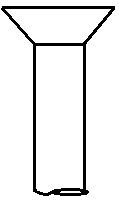
a) Conical head
b) Snap head
c) Countersunk head
d) Pan head
View Answer
Explanation: None.
10. Cup head riveting provides maximum strength.
a) True
b) False
View Answer
Explanation: Cup head riveting or snap head riveting is the most commonly used method of riveting, but the method that provides the most strength is the pan head riveting method.
Sanfoundry Global Education & Learning Series – Welding.
To practice all areas of Welding for Campus Interviews, here is complete set of 1000+ Multiple Choice Questions and Answers.
If you find a mistake in question / option / answer, kindly take a screenshot and email to [email protected]
- Check Mechanical Engineering Books
- Apply for Mechanical Engineering Internship
- Apply for Metallurgical Engineering Internship
- Practice Metallurgical Engineering MCQs
- Practice Casting, Forming and Welding I MCQ
